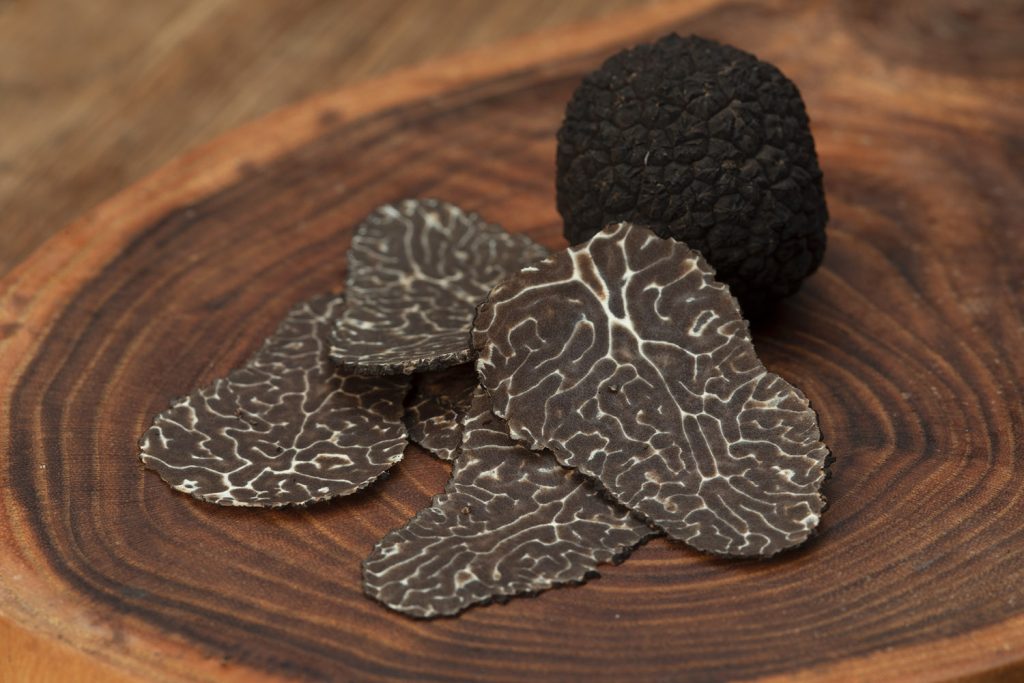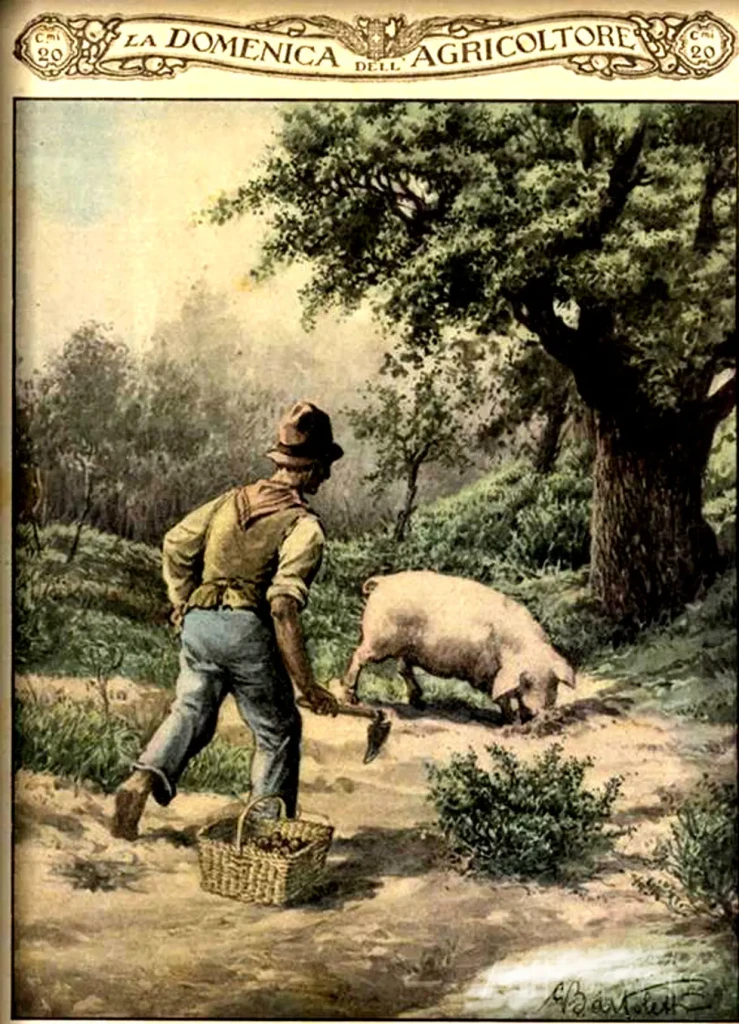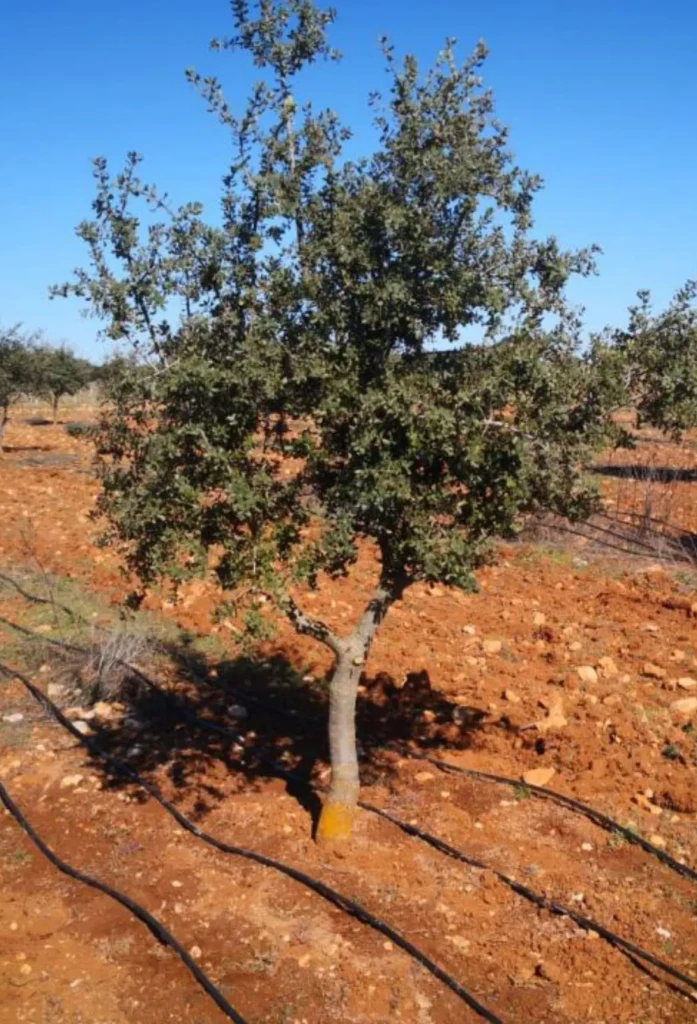Cultivation & Agricultural Development
The 19th century saw the systematization of truffle cultivation (trufficulture), particularly in France:
Joseph Talon (early 1800s, Apt, Provence) is credited with pioneering truffle cultivation by planting acorns from truffle-producing oaks, thus encouraging mycorrhizal growth.
Pierre II Mauléon (ca. 1790s) explored similar methods, observing the oak–truffle symbiosis.
Auguste Rousseau (1847) planted 7 hectares of truffle oaks near Carpentras and was awarded at the 1855 Paris Exposition Universelle.
By 1890, truffle plantations covered around 750 km² in France, producing 2,000 tons annually.
In Hungary, foresters like Károly Szőts and Vilmos Kondor adapted French methods (Talon’s) for local oak woodlands by 1901.
Scientific Research & Taxonomy
Key figures contributed to the biology and taxonomy of truffles:
Carlo Vittadini (Italy, 1831) – Monographia Tuberacearum: first morphological classification of truffle species.
Albert Bernhard Frank (1885) introduced the term mycorrhiza, describing plant–fungus symbiosis as key to truffle development.
Franciszek Kamieński (1888) – examined soil-fungus interactions crucial to truffle formation.
Louis Matruchot (France, 1903) published on white truffle mycelium and early artificial cultivation methods.
Gastronomy & Cookbooks
Truffles entered culinary high society through the works of famous chefs and writers:
Jean Anthelme Brillat-Savarin (1825), in The Physiology of Taste, calls the truffle:
“The diamond of the kitchen” and “not a direct aphrodisiac, but one that makes women more tender, and men more pleasant.”
He discusses regional varieties, their seasonality, and digestibility. He also humorously mentions truffles causing “dangerous predispositions” in emotions.
Marie-Antoine Carême (1828) and Auguste Escoffier (1903) included truffles in classic French sauces (e.g. Sauce Périgueux) and haute cuisine.
Mrs. Beeton’s Book of Household Management (1861) features truffle-based English recipes, showing its status in Victorian upper-class dining.
Brillat-Savarin’s comments on truffles in his work “La Physiologie du goût” (1825)
“The truffle is not a direct aphrodisiac, but in certain circumstances, it may render women more tender and men more amiable.”
“There are truffles and truffles, just as there are bundles of firewood and bundles of firewood — that is to say, not all are created equal.”
“The Périgord and Haute-Provence truffles reach their full perfume in January. They are among the most highly prized. The Burgundian and Dauphiné varieties are harder, with a less fine aroma.”
“Both pigs and dogs are employed in the hunt, though some old countrymen claim to detect the presence of truffles simply by the lay of the land.”
“From over fifty years of dining experience, I can confirm that truffles are not at all indigestible, contrary to popular belief.”
“I once attended a dinner where a truffled turkey was served. A guest coughed up a whole piece of truffle. We all laughed — proof that even excessive truffle consumption causes more amusement than discomfort.”
“A lady once confessed that truffles had put her in a dangerous state — not ill, but inclined toward passion. She blamed them for her emotional surrender, though not without a certain affection.”
Annotated bibliography (selected works)
Cultivation & History
Talon, J. (1815). Traité de la culture et de la manière de conserver les truffes.
Mauléon, P. II. (1792). Mémoire sur la truffe et les bois truffiers.
Rousseau, A. (1847). Rapport sur la Plantation de Chênes Truffiers à Carpentras.
Szőts, K. (1905). Hungarian adaptation of French truffle cultivation.
Kondor, V. (1901). On truffle plantations in Litke.
Science & Taxonomy
Vittadini, C. (1831). Monographia Tuberacearum.
Frank, A. B. (1885). On mycorrhiza and truffle biology.
Kamieński, F. (1888). Soil biology and fungal interactions.
Matruchot, L. (1903). On white truffle mycelia and artificial culture.
Culinary & Cultural
Brillat-Savarin, J. A. (1825). La Physiologie du goût – poetic, philosophical food writing.
Carême, M.-A. (1828). Le Pâtissier Royal Parisien – early haute cuisine.
Escoffier, A. (1903). Le Guide Culinaire – codification of French cuisine.
Beeton, I. M. (1861). Mrs Beeton’s Book of Household Management – middle-class English recipes.
Flaubert, Byron, Colette – literary truffle mentions.







